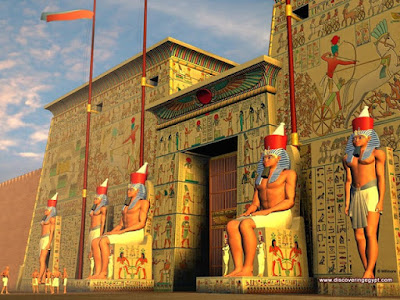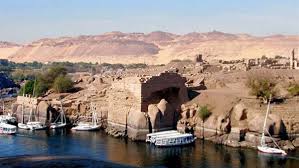Tuesday, September 15, 2020
ancient Egyptian
Sunday, September 13, 2020
Cent NESU
Saturday, September 12, 2020
cobra snake
Princess Nefert
Merit Aton
Thursday, September 10, 2020
Egyptian Mummy’s DNA
Pharaohs of ancient Egypt (their customs and traditions)
Pharaohs of ancient Egypt (their customs and
traditions)
Pharaoh, (means "incredible
house"), initially, the illustrious royal residence in antiquated Egypt.
The word came to be utilized metonymically for the Egyptian lord under the New
Kingdom (beginning in the eighteenth administration, 1539–1292 BCE), and by the
22nd tradition (c. 945–c. 730 BCE) it had been embraced as an appellation of
regard. It was never the lord's proper title, however, and its advanced use as
a nonexclusive name for all Egyptian rulers depends on the use of the Hebrew
Bible. In authentic records, the full title of the Egyptian ruler comprised of
five names, each went before by one of the accompanying titles: Horus, Two
Ladies, Golden Horus, King of Upper and Lower Egypt, and Son of Re. The last
name was given to him during childbirth, the others at crowning celebration.
Egyptians consider the Pharaohs their Gods!
The Egyptians accepted their pharaoh to be the arbiter
between the divine beings and the universe of men. After death the pharaoh got
divine, related to Osiris, the dad of Horus and lord of the dead, and gave his
sacrosanct powers and position to the new pharaoh, his child. The pharaoh's
perfect status was depicted in symbolic terms: his uraeus (the snake on his
crown) spat flares at his adversaries; he had the option to stomp on a huge
number of the foe on the combat zone; and he was almighty, knowing it all and
controlling nature and richness.

Pharaohs responsibilities) How pharaohs ruled Egypt)
As a celestial ruler, the pharaoh was the preserver of
the inherent request, called maat. He possessed an enormous part of Egypt's
territory and coordinated its utilization, was answerable for his kin's
monetary and profound government assistance, and apportioned equity to his
subjects. His will was preeminent, and he administered by illustrious
announcement. To administer decently, however, the pharaoh needed to assign
obligation; his central partner was the vizier, who, among different
obligations, was boss equity, top of the depository, and administrator
everything being equal. Underneath this focal position, the illustrious will of
the pharaoh was regulated through the nomes, or regions, into which Upper and
Lower Egypt were isolated.
Numerous researchers accept the primary pharaoh was
Narmer, additionally called Menes. In spite of the fact that there is some
discussion among specialists, many accept he was the primary ruler to join
upper and lower Egypt (this is the reason pharaohs hold the title of "master
of two terrains").
Female pharaohs!
Pharaohs were
ordinarily male, in spite of the fact that there were some essential female
pioneers, as Hatshepsut and Cleopatra. Hatshepsut, specifically, was an
effective ruler, however numerous engravings and landmarks about her were
devastated after her demise—maybe to prevent future ladies from turning out to
be pharaohs.

Pharaohs believed that there is Life after death
After their demises, numerous pharaohs were buried and
encircled by wealth they were intended to use in life following death.
Travelers and archeologists have found these burial chambers and took in a lot
about antiquated Egyptian culture from them. One exceptionally well-known model
was in 1922 when prehistorian Howard Carter found the burial chamber of King
Tutankhamen, a pharaoh who passed on when he was just nineteen.
Wednesday, September 9, 2020
Elephantine Temple
KA
Tuesday, September 8, 2020
discover
Sunday, September 6, 2020
Queen Nefertiti
The costs of mummification
The four sons of Hor
The four sons of Hor They are responsible for preserving the body parts of the deceased The first: My head is watery .... special for the l...

-
6000 BC Around 6000 BC Egyptians settled in the valley near Nile. They used river Nile's clay and silt for pottery vessels. 5000 BC...
-
Trade has always brought huge sum as revenue to a particular civilization. People at Egyptian civilization are no exceptions to them. Anci...
-
Plate 7. EGYPTIAN DECORATION Plate VII. The decoration on this plate shows the detail of the characteristic Egyptian winged glo...





















